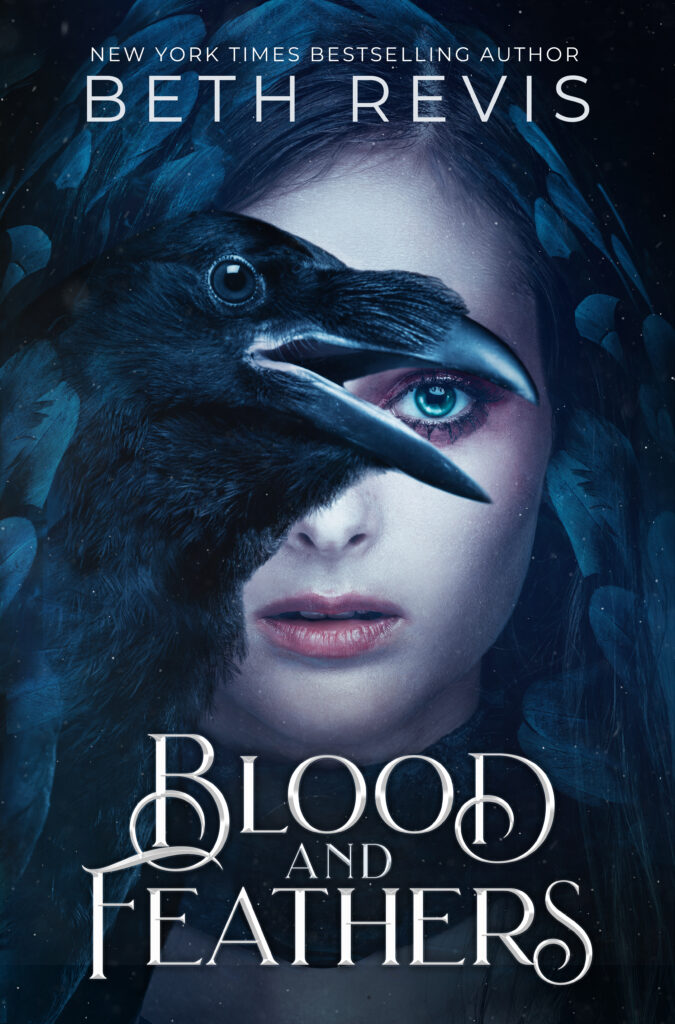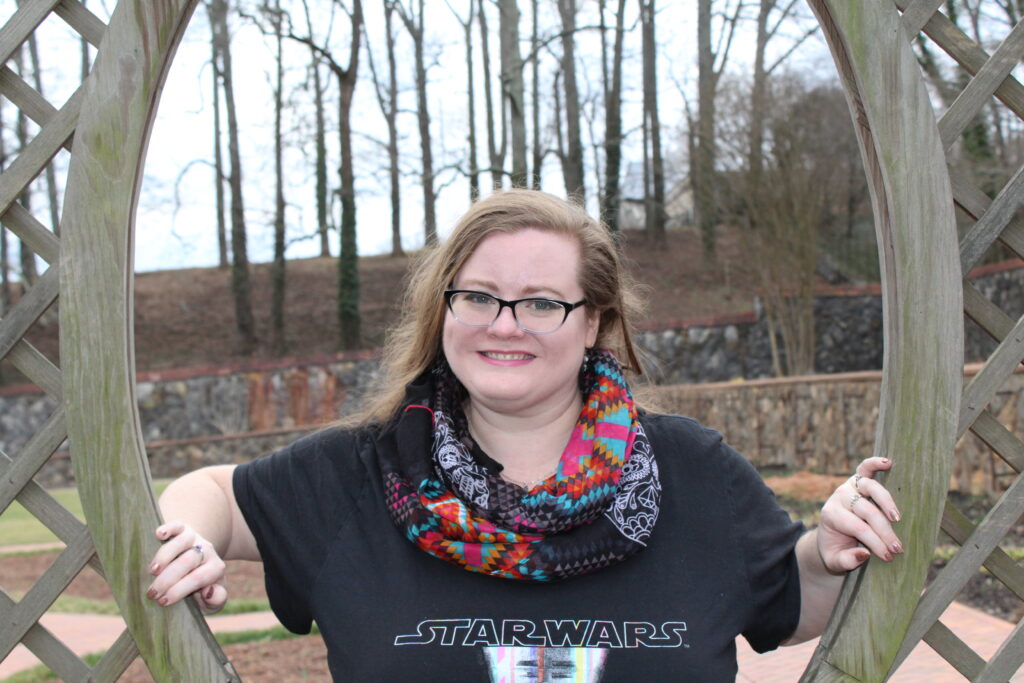Literally Bringing Readers Into the Story through Interactive Serial Novels, a guest post by Beth Revis

It took a pandemic for me to experiment with serial novels, but I never thought it would totally change both the way I write and the way I interact with readers.
In 2020, as Covid had me tucked in my house and craving at least a little human interaction, Amazon announced a new writing program called Kindle Vella. It was Amazon’s answer to Wattpad and other online platforms, a union of the behemoth of the corporate giant and the vast readership of serial novels. And here, I thought, was a chance for me to blend together my love of Dungeons and Dragons (my team being another casualty of cancelled pandemic plans) as well as the classic Choose-Your-Own-Adventure style novels. I could write a story one chapter at a time, using reader input to shape the overall plot. I got my feet wet with my first serialized novel, Blood and Feathers. Readers voted at a handful of key turning points, but I wanted to raise reader involvement even more.
ADVERTISEMENT
ADVERTISEMENT

In January of 2022, I went all in and designed an entire story around the concept of interaction. Everything would be up to fate and every chapter would involve readers making meaningful choices. I made myself—and my readers—a promise: this story would not exist without us working together, and every choice would be meaningful. If I rolled low or the votes took the story into a different direction, I had to play out the consequences.
I came up with a premise that would allow flexibility. My main character, the descendant of a Salem witch, doesn’t believe in magic. But then both a boy linked to the fae world and a witch hunter arrive at her house at the same time. A magical artifact is broken, and she must piece it back together in order to protect herself and those she loved.
The artifact—a witch bottle, based on actual sixteenth century witchcraft—was key. My main character, Emmi, had multiple items to search for and multiple ways to get those items. There were lots of options to play with.
In order to build community, I expanded to include Patreon, a more open format that allowed commenting as well as voting. I created a schedule that would give readers time to interact—voting started on Tuesday, and the new chapter was posted the following Sunday.
Museum of Magic was born. Now nearly thirty chapters long with a planned sequel in the works, readers have kept the story in the leaderboard charts on Amazon Vella and have built a fun, conversation-driven community on Patreon. More than 5,000 people have given Museum of Magic a read, despite the first chapter only being posted a few months ago. Every Sunday, readers comment on my social media about how they intend to vote for the next chapter to play out, and hundreds of newsletter subscribers have joined my “Crown Club,” where they get weekly updates on the real history or obscure mythology that have influenced that week’s chapter.

The key to this story is all in the way readers get to be actively involved in every stage. Sometimes that gets complicated, but it’s always worth it, even when early attempts at planning go out the window…
At the beginning of each week, I sketch out an outline on the next chapter, making sure there are around five or so “events” that can be determined by chance, as well as one more event that can be determined by reader votes. For each chance event, I assign a number, usually using a formula that involves four options with varying degrees of success.
For example, in a recent episode, my main character, Emmi, is chasing a flock of birds through the forest, hoping the birds will lead her to another character she needs to meet. I assigned four possible outcomes, depending on dice rolls. If I rolled a perfect twenty on my D20 dice, then Emmi kept up perfectly fine and had no trouble at all. If I rolled a 10-19, Emmi would splash through a creek, get muddy and wet, but not lose track. If I rolled a 2-9, Emmi also had to race through a field of thorns and nettles and get hurt from that. And if I rolled a one, Emmi would trip on the way and sprain her ankle.
These types of events create a perfect and fun outline for me to follow, which I record on YouTube and share with my readers. We live those highs and lows together—in the scenario above, I rolled a 7, which meant Emmi was wet, muddy, and scratched up by thorns by the time she met the fairy king. It absolutely changed other elements of the story—how the fairy king thought of her, for example.

Other events are even more dire—determining if a spell will work, if a character takes damage, or if a character sees through a disguise or uncovers a secret. Sometimes when I roll, I roll a very low number, and all I can do is look at the screen, tell my readers “Well, Emmi didn’t noticing something and kept going,” and then scratch a whole story line that would have changed the shape of the novel! The comments usually speculate what would have been, but my readers know that this is a “choose-your-own-adventure” style novel where they don’t get to go back and re-do the events.
ADVERTISEMENT
ADVERTISEMENT
I always end each session with one major decision for the main characters to make, and I leave that decision up to the readers to vote on. I try my best to not be biased or push them to one option or another, but I also very sincerely work to create a voting choice that has weight. The votes are the biggest decision, and it’s not unusual for my readers to take to the comments and argue one way or another, chatting with each other or presenting reasoning for why they want the character to do something. Usually, majority rules, but I also sometimes post open-ended questions, such as having the readers come up with an escape plan or a question to ask.

Not only am I writing a book in this collaborative, interactive way, I’ve also developed programming for students so I can bring this style of writing into the classroom and libraries of young adults. I developed an hour-long lesson that can be done virtually or live, where students get to roll dice, flip coins, and do other elements of chance to come up with their own story. Even if we start with the same idea, each student walks away with their very own unique, chance-driven story! (If you’d like to hire me to come to your library or classroom and bring this program to your students, please contact The Author Village. As a former high school English teacher, it’s always a joy to spread a love of writing to young people!)

My interactive serial novels have been a fascinating experience that has brought me closer to my readers. Without readers, my books are nothing more than ink and paper. It has always been the reader who has brought my stories to life in their imagination. Writing in this interactive way has made the partnership between reader and writer even more vividly alive.
Meet the author

Beth Revis is the New York Times bestselling author of multiple novels, including the popular young adult science fiction Across the Universe and Rebel Rising. Her next book is Star Wars: The Princess and the Scoundrel, available in August. You can find her online at bethrevis.com and on Twitter and Instagram.
Filed under: Guest Post
About Amanda MacGregor
Amanda MacGregor works in an elementary library, loves dogs, and can be found on Twitter @CiteSomething.
ADVERTISEMENT
ADVERTISEMENT
SLJ Blog Network
Coming Soon: The Top 10 Posts of 2024
31 Days, 31 Lists: 2024 Fantasy Books for Kids
Exclusive: Papercutz to Publish Mike Kunkel’s Herobear | News and Preview
The Seven Bills That Will Safeguard the Future of School Librarianship
ADVERTISEMENT







